Designing Crops for Global Food Security
P2IRC’s seven-year innovative research and training program, Designing Crops for Global Food Security, is transforming crop breeding and providing innovative solutions to national and global food security. The program builds upon the Global Institute for Food Security’s (GIFS) focus on computational agriculture to enhance the USask biosciences cluster - one of the largest clusters of food-related researchers in the world.
P2IRC combines the sciences of plant bioinformatics and genomics with crop phenotyping (the identification of useful traits) using advanced image acquisition technologies, high-performance computing, and impactful socioeconomic analyses.
Technologies and expertise developed at P2IRC will elevate Canada’s position as a global powerhouse in agricultural research and lead to commercial spin-offs involving field and aerial sensors, satellite imaging, robotics, and big data analytics.
Quick Facts
- The program involves partnerships with several Canadian and international universities and more than 15 private and public corporations, including the National Research Council Canada (NRC) and Agriculture and Agri-Food Canada (AAFC).
- The research involves scientists from a wide range of centres located at USask, including GIFS, the College of Agriculture and Bioresources, the Canadian Light Source, and the Sylvia Fedoruk Canadian Centre for Nuclear Innovation. The Johnson-Shoyama Graduate School of Public Policy is P 2IRC's lead partner on policy research.
- Over the program’s seven years, more than 60 graduate students and 35 postdoctoral fellows will be trained at P 2IRC. Four new faculty positions are also planned.
- All P 2IRC research proposals that were submitted underwent rigorous international peer review.
- P 2IRC continues to accept applications for various positions including: postdoctoral fellows, graduate students, research associates, technicians, and developers.
Linking Technology Globally
Although many of the approaches used in P2IRC to link genotyping to phenotyping (trait-mapping) appear to be high-tech, advanced methods, we are aware of the need of developing countries to improve their agricultural productivity. In fact, countries in sub-saharan Africa are already beginning to use digital tools in agriculture through the medium of smartphones and web-based tools which may be situated remotely. P2IRC researchers is working on approaches that are transferable to the developing world, so that farmers everywhere can benefit from the confluence of digital technologies and agriculture.
Structure and Governance
P2IRC's governance structure includes leadership from the University of Saskatchewan and the Global Institute for Food Security (GIFS). Advisory committees include the following: an Institutional Oversight Committee (IOC), International Scientific Advisory Committee (ISAC), Executive Research Committee (ERC), and an Industry Advisory Committee (IAC).
Leadership
With U of S Vice-President Research, Baljit Singh providing oversight, P2IRC is managed by Ian Stavness, GIFS Enhancement Chair in Computational Agriculture. P2IRC's leadership is building a talented and multi-disciplinary team across the U of S campus and with collaborating Canadian and international universities and centres.
Institutional Oversight Committee (IOC)
The CFREF IOC provides advice and guidance to the U of S Vice-President Research. The IOC also assists in operational matters including recruitment, monitoring progress, and endorsing project objectives. Strategic functions include promoting the CFREF: Designing Crops for Global Food Security within and outside the university, as well as engagement of faculty, staff, and students across the university and with national and international partners.

A long-time agriculture champion and senior government executive, Alanna was most recently Deputy Minister to the Premier and Cabinet Secretary. Prior to that, she was the Saskatchewan Deputy Minister of Agriculture for nine years. As one of the longest serving Agriculture Deputy Ministers in Saskatchewan and Canadian history, Alanna worked closely with farmers and industry and her priority was to build and maintain public trust in agriculture by focusing on science-based decision making and communicating the benefits of modern tools and technology. Alanna has been involved in the agriculture industry, both professionally and personally, for most of her life. Before joining government, she was President of the Canadian Agri-Food Trade Alliance and was a Director with Agricore United (a predecessor of Viterra), and Executive Director of the Western Canadian Wheat Growers Association. She was on the board of the Saskatchewan Trade and Export Partnership (STEP) and the Buffalo Plains School Division. In 2015, she was recognized by the Regina YWCA with the Women of Distinction Award for excellence in Leadership and Management. In 2012, Alanna received the Queen Elizabeth II Diamond Jubilee Medal and in 2011, she was inducted into the Saskatchewan Agricultural Hall of Fame for her outstanding achievement in the sector. In 2005, her contributions to the agricultural industry and to her community were recognized when she received the Saskatchewan Centennial Medal. Alanna is a graduate of the Canadian Agriculture Lifetime Leadership program and an Honorary Life Member of the Saskatchewan Institute of Agrologists. She has a Chartered Director designation from the Directors College, a program of the Conference Board of Canada and the Michael D. DeGroote School of Business at McMaster University. Alanna and her husband, Gerry Hertz, farm at Edenwold. They have two daughters, Shayla and Keisha.
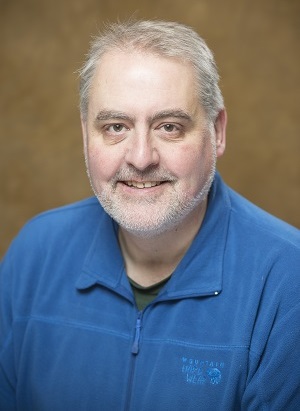
Andrew Sharpe is the Director of Genomics and Bioinformatics at GIFS and joins P2IRC in the capacities of theme lead of phenometrics and lead of the genomics and bioinformatics platform that is supporting the initiative. Dr. Sharpe oversees efforts to establish integrated crop genomics, informatics, and phenomics platforms to support both GIFS and P2IRC.
Dr. Sharpe received his BSc (Hons) in Biological Sciences from the University of Leicester in 1988 and his PhD in Plant Genetics from the University of East Anglia in 1997 while working at the John Innes Centre in the UK. He brings significant experience in plant genetics and genomics to P2IRC and GIFS from his careers as a senior research officer at the National Research Council of Canada and at the Agriculture and Agri-Food Canada research centre in Saskatoon. Dr. Sharpe has coordinated several projects to establish genomics and molecular genetics resources in numerous crops including canola, wheat, and lentil. He is currently co-lead on the $10M Genome Canada / Prairie 'Canadian Triticum Applied Genomics' (CTAG2) project, which recently led the development of a high quality whole genome assembly of the bread wheat genome.
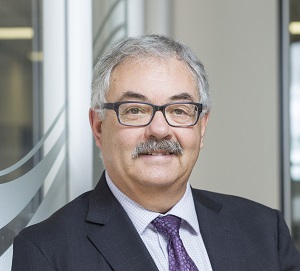
During Jerome's tenure at Saskatchewan Innovation (October 2011-October 2016), he helped develop key partnerships between the province, industry and academia in sectors including mining (International Minerals Innovation Institute), nuclear innovation (Sylvia Fedoruk Canadian Centre for Nuclear Innovation) and agriculture (Global Institute for Food Security). Konecsni joined the province after serving as the Director General of the National Research Council's Plant Biotechnology Institute. In this capacity he was part of a team that was awarded the National Public Service Award of Excellence for contribution in science for the first 100 per cent bio jet flight in the world.He has also served as the CEO of Genome Prairie and BioSmart Technologies, and as Vice-President of Corporate Development for Bioriginal Food and Science Corporation. In the latter role, he helped the company grow from a small start up to a successful international enterprise with a presence on four continents.
Konecsni is an active leader in the community and has served on many boards and committees. He was a founding director of both the Sylvia Fedoruk Canadian Centre for Nuclear Innovation and the International Minerals Innovation Institute, and served on the boards of the Canadian Light Source, the Vaccine and Infectious Disease Organization, and the Agricultural Bioscience International Conference. Born, raised, and educated in Saskatchewan, Jerome received his MA, BEd and BA (Honours) from the University of Saskatchewan. In 2011, he was awarded a Honourary Doctorate from Karunya University in India.

Robert Lamb is the Chief Executive Officer of the Canadian Light Source, Canada’s national synchrotron facility in Saskatoon, Saskatchewan. Professor Lamb completed a PhD in Surface Chemistry at The University of Melbourne and a PhD in Solid State Physics at Cavendish Laboratory, University of Cambridge. His academic history includes appointments at institutions including University of Heidelberg, Germany; University of Sydney; University of Cambridge as well as Universities in the USA and Hong Kong. He has published 202 papers and 39 patents, most notably in the area of surface and materials science. He has lectured in both Physics and Chemistry for the past 20 years and has had 75 postgraduates in the past decade.
Dr. Lamb was Head of the School of Chemistry at the University of New South Wales (Sydney) from 2000-2006 and also Director of the Surface Science and Technology Centre. From 2007-2009 he was Foundation Director of the Australian Synchrotron - the $400 million National Science institute established in Melbourne. He served on a number of committees including the Australian Academy of Sciences Chemistry Committee, Editorial board of Surface and Interface Analysis, including Chair of Scientific Advisory Committee for the Canadian Light Source. He also chaired the ISO group that produced National Standards for surface characterization and also world’s first ISO certification for Synchrotron operations.
He is a member of the Australian Institute of Company Directors and currently holds positions on Boards in Australia, North America and Asia. He has founded 3 start-up ventures. His current research interests are in thin film materials with particular emphasis on non-stick surfaces. He is also working with staff and students on developing the translation of science to technology within a University setting.
Executive Research Committee (ERC)
The ERC includes our P2IRC Theme Leads in each of our research areas:

Andrew Sharpe is the Director of Genomics and Bioinformatics at GIFS and joins P2IRC in the capacities of theme lead of phenometrics and lead of the genomics and bioinformatics platform that is supporting the initiative. Dr. Sharpe oversees efforts to establish integrated crop genomics, informatics, and phenomics platforms to support both GIFS and P2IRC.
Dr. Sharpe received his BSc (Hons) in Biological Sciences from the University of Leicester in 1988 and his PhD in Plant Genetics from the University of East Anglia in 1997 while working at the John Innes Centre in the UK. He brings significant experience in plant genetics and genomics to P2IRC and GIFS from his careers as a senior research officer at the National Research Council of Canada and at the Agriculture and Agri-Food Canada research centre in Saskatoon. Dr. Sharpe has coordinated several projects to establish genomics and molecular genetics resources in numerous crops including canola, wheat, and lentil. He is currently co-lead on the $10M Genome Canada / Prairie 'Canadian Triticum Applied Genomics' (CTAG2) project, which recently led the development of a high quality whole genome assembly of the bread wheat genome.

Dr. Helgason is an Associate Professor of Agronomic Microbiology in the Department of Soil Science at the University of Saskatchewan. With the goals of promoting efficient nutrient cycling, improved crop growth and sustainable soil management, her research focuses on soil- microbial-plant interactions and how these relationships are affected by agricultural management practices.
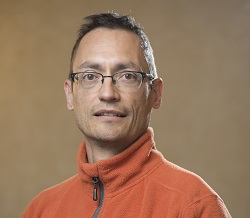
Carl Gutwin is Professor of Computer Science at the University of Saskatchewan, the co-director of the U of S Human-Computer Interaction lab, and a past Canada Research Chair in Next-Generation Groupware. He has published more than 200 papers in Human-Computer Interaction (HCI) and Computer-Supported Cooperative Work (CSCW). In 2012, he was inducted into the ACM CHI Academy for his contributions to HCI research, and he was recognized as an ACM Distinguished Researcher in 2015. His research covers a variety of topics in HCI and CSCW including interface design and organization, information visualization, modeling of human performance, collaboration support, and groupware usability.
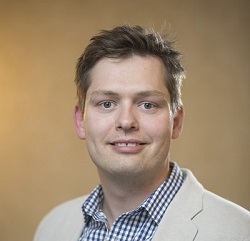
Ian Stavness is the Global Institute for Food Security Enhancement Chair in Computational Agriculture, Program Director of the Plant Phenotyping and Imaging Research Centre and an Associate Professor in Computer Science at the University of Saskatchewan.
His research involves image analysis, machine learning and computer modelling for biological, biomedical and agricultural applications. On the Deep Learning for Phenomics project of P2IRC, Prof. Stavness and his team develop new methods to extract digital signatures from crop images (e.g., taken with drones and tractors) and new software to model and analyze plant data. Prof. Stavness serves as a member of the Board of Directors for the Pacific Institute for the Mathematical Sciences (PIMS).

Peter WB Phillips is Distinguished Professor of Public Policy in the Johnson-Shoyama Graduate School of Public Policy at the University of Saskatchewan. He undertakes research on governing transformative innovation, including regulation and policy, innovation systems, intellectual property, supply chain management and trade policy. He held a SSHRC/NSERC Chair in Managing Technological Change, has been co-applicant or principal investigator on about 20 grants, with a total awarded value of approximately $250 million. He was co-lead of a $5.4 million Genome Canada project entitled Value Addition through Genomics and GE3LS (VALGEN) which ran 2009-14. He is author or editor of 13 books, over 40 journal articles and more than 50 book chapters.
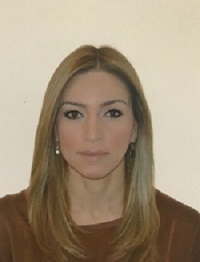
Lana is a research associate at the department of Johnson Shoyama School of Public Policy, University of Saskatchewan. In October 2012, she completed a Ph.D. in Agricultural Economics from the University of Saskatchewan. She has a M.Sc. in Business Economics & Management from the International Center for Advanced Mediterranean Agronomic Studies, Greece; and a B.A. in Commerce from the Arab University of Beirut. Lana’s research focuses on the economic, social, and environmental impacts of agricultural innovations and policies. Expert in measuring the distributional effects of the development and adoption of sustainable agricultural innovations, such as land management technologies and crop breeding advances for global food security; and in the measurement and assessment of the total factor productivity growth in the crop and livestock sectors. Articulating academic, government, and private project-based work experience on a number of agricultural regulations, innovations, and productivity issues, from quantitative/qualitative analysis of producer, processor and consumer behaviour in the supply chain, to assessment of economic implications of changes in the agricultural sector. Research outcomes are directed at toward government and non-government decision-makers to allocate decisions for agricultural improvement and to formulate evidence-based, targeted strategies.
International Scientific Advisory
Committee (ISAC)
The ISAC provides independent expert scientific advice to the Program Director and ERC, and offers objective input into the strategic direction of the program. The ISAC ensures research objectives and methodologies are sound and well positioned to address the needs of Canada and the world.
The Committee advises on the scientific strategic quality of proposals to be funded through this award, as well as international scientific trends, emerging scientific research opportunities, knowledge translation, and potential national and international competition and collaborations and linkages. The ISAC is also the primary body for monitoring progress against objectives.
Membership on the P2IRC ISAC includes world-renowned researchers and innovation leaders in areas of expertise including genetics, phenomics, bioinformatics, crop science, imaging techniques, computer science, social sciences, and public engagement.
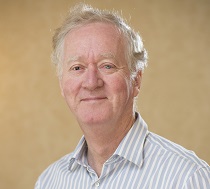
Professor Peter Langridge is a leading University of Adelaide plant scientist, now emeritus professor, and Australia’s Scientist of the Year (2011) who brings his expertise in cereal and plant genomics to P2IRC’s ISAC. He serves on advisory boards for several research organizations and companies in Europe and North America and is an honorary fellow of Food Standards Australia and New Zealand. Professor Langridge’s recent activities have focused on food security and technology delivery to resource-poor farmers in many parts of the world and on Australia’s role in supporting global food security.

Andrew Sharpe is the Director of Genomics and Bioinformatics at GIFS and joins P2IRC in the capacities of theme lead of phenometrics and lead of the genomics and bioinformatics platform that is supporting the initiative. Dr. Sharpe oversees efforts to establish integrated crop genomics, informatics, and phenomics platforms to support both GIFS and P2IRC.
Dr. Sharpe received his BSc (Hons) in Biological Sciences from the University of Leicester in 1988 and his PhD in Plant Genetics from the University of East Anglia in 1997 while working at the John Innes Centre in the UK. He brings significant experience in plant genetics and genomics to P2IRC and GIFS from his careers as a senior research officer at the National Research Council of Canada and at the Agriculture and Agri-Food Canada research centre in Saskatoon. Dr. Sharpe has coordinated several projects to establish genomics and molecular genetics resources in numerous crops including canola, wheat, and lentil. He is currently co-lead on the $10M Genome Canada / Prairie 'Canadian Triticum Applied Genomics' (CTAG2) project, which recently led the development of a high quality whole genome assembly of the bread wheat genome.
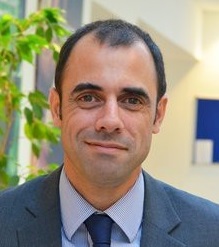
Professor Mario Caccamo is the Head of Crop Bioinformatics at the National Institute of Agricultural Botany and has over 15 years of experience in life science research and big data. His work includes the application of DNA sequencing technologies and bioinformatics methods to the study of crop genetics and interactions between agricultural crops and their environments. He led work on the assembly of the first whole-genome release of the wheat reference sequence and helped found the Wheat Initiative’s expert working group focused on an international Wheat Information System.
Professor John Doonan has spent over 25 years working with genetics and the developmental cell biology of plants and fungi. Before joining the Institute of Biological, Environmental, and Rural Sciences centre as director of the National Plant Phenomics Centre at the University of Aberystwyth, he was group leader at the John Innes Centre in Norwich. Previous to that, he worked at the Robert Wood Johnston Medical School in New Jersey, USA and obtained his PhD from Leeds University.

Dr. Christophe Godin is a senior researcher at INRA (the French institute for computational sciences and mathematics) and head of the Inria Virtual Plants team. His main research interests lie in the computational modeling of plant development and morphology at scales ranging from the cellular level up to the whole plant. Dr. Godin’s group is developing OpenAleaLab, a software platform dedicated to modeling morphogenesis and making possible the use and combination of various computational paradigm.
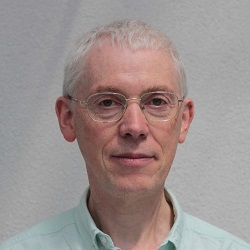
Professor Bronwyn Harch is the Executive Director of the Institute for Future Environments (IFE) and professor of applied statistical science at Queensland University of Technology. Professor Harch leads transdisciplinary research efforts between industry, government, and the community to address global challenges by generating knowledge, technology, and practices that catalyze sustainability, security, and resiliency in our world. Her career in applied statistics spans 21 years of research, primarily at the nexus of agricultural and environmental systems, and focuses on the statistical design of landscape-scale sampling protocols, monitoring programs, and modeling complex systems.
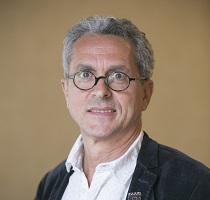
Professor Victor Malka, after having spent 20 years running a world-class laboratory in high-intensity laser physics at the École Polytechnique in France, is now head of the Schwartz/Reisman Laboratory for Intense Laser Physics at the Weizmann Institute of Science in Israel. Since producing the first laser-plasma-driven electron beams in the late 1980s, Professor Malka has demonstrated new applications of this technology in many diverse fields and has used laser power to miniaturize particle accelerators into something fitting easily on a lab bench.

Dr. Philip G. Pardey is Professor of Science and Technology Policy in the Department of Applied Economics at the University of Minnesota. He is also the Director of Global Research Strategy for the College of Food Agricultural and Natural Resource Sciences and the Minnesota Agricultural Experiment Station and directs the University’s International Science and Technology Practice and Policy (InSTePP) Center. Dr. Pardey's ;research deals with agricultural productivity measurement and assessment, the finance and conduct of R&D globally, methods for assessing the economic impacts of research, and the economic and policy (especially intellectual property) aspects of genetic resources and the biosciences.
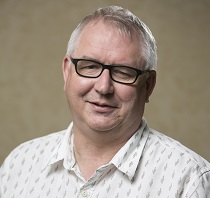
Professor Tony Pridmore leads the Computer Vision Laboratory at the University of Nottingham where he works to develop integrated plant phenomics technologies. He is a founder and managing member of the university's Centre for Plant Integrative Biology and is co-director of the Hounsfield Facility, an installation providing automated extraction of 3D structural descriptions of plants from X-ray data. Professor Pridmore also co-chairs the UK Plant Phenotyping Network and is a co-organizer of the Imaging and Image Analysis Working Group of the International Plant Phenotyping Network.
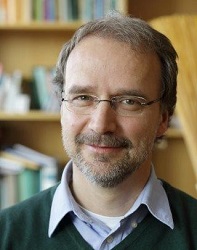
Professor Ulrich Schurr joins our ISAC as a renowned plant scientist with a wide background in plant ecology, physiology, molecular biology, and plant breeding. He presently leads IBG-2: Plant Sciences at Forschungszentrum Jülich, is the founding director of the Bioeconomy Science Center, is the coordinator for both the German and European Plant Phenotyping Networks, and is a member of the German Cluster of Excellence on Plant Sciences. Professor Schurr is the chairman of EMPHASIS, the International Plant Phenotyping Network, and the European Technology Platform.

Dr. Jean Susini is Director of Research for life sciences at the European Synchrotron, where he investigates X-ray optics and imaging techniques. Prior to this, he was the head of the Instrumentation Services and Development Division, an interdisciplinary centre of excellence with 130 staff working on detectors and electronics, X-ray optics, mechanical engineering, data analysis, and beamline control. Dr. Susini serves on various advisory boards and review committees including for synchrotron facilities in Spain, the UK, France, Taiwan, and America.
Industry Advisory Committee (IAC)
The IAC consists of national and international business and innovation leaders in areas that complement the research strengths and themes of the Canada First Research Excellence Fund award and its ambitions for world-class research excellence and applicability.
The IAC provides independent advice on matters of commerce to the Program Director and Executive Research Committee, and offers objective input into the strategic direction of the program. It also ensures P2IRC technologies and processes are well positioned and address the needs of the Canada and the world.
The Committee advises on the relevance and real-world applicability of the technologies and commercial spin-offs of P2IRC such as field and aerial sensors, satellite imaging, robotics, big data analytics and more.
- George Annette, BASF (Retired)
- Art Froehlich, Agriview Inc
- Bruce Harrison, Nutrien
- Chris Anderson, Protein Industries Canada
- Carl Potts, Saskatchewan Pulse Growers
- Devin Dubois, Blue Skies Hemp Ventures Ltd
- Ian Stavness, GIFS
- Karen Churchill, AG-West Bio
- Kevin Halborg, Viterra
- Keith Fournier, Producer (Vice-Chair, Saskatchewan Canola Development Commission Board)
- Larry Holbrook, Zyus
- Laurie Dmytryshyn, PIC Investment Group
- Masood Rizvi, NRGene Ltd.
- Steve Hunt, Qubit Systems
P2IRC Staff
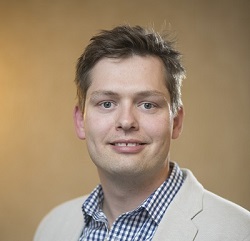
Ian Stavness is the Global Institute for Food Security Enhancement Chair in Computational Agriculture, Program Director of the Plant Phenotyping and Imaging Research Centre and an Associate Professor in Computer Science at the University of Saskatchewan.
His research involves image analysis, machine learning and computer modelling for biological, biomedical and agricultural applications. On the Deep Learning for Phenomics project of P2IRC, Prof. Stavness and his team develop new methods to extract digital signatures from crop images (e.g., taken with drones and tractors) and new software to model and analyze plant data. Prof. Stavness serves as a member of the Board of Directors for the Pacific Institute for the Mathematical Sciences (PIMS).

